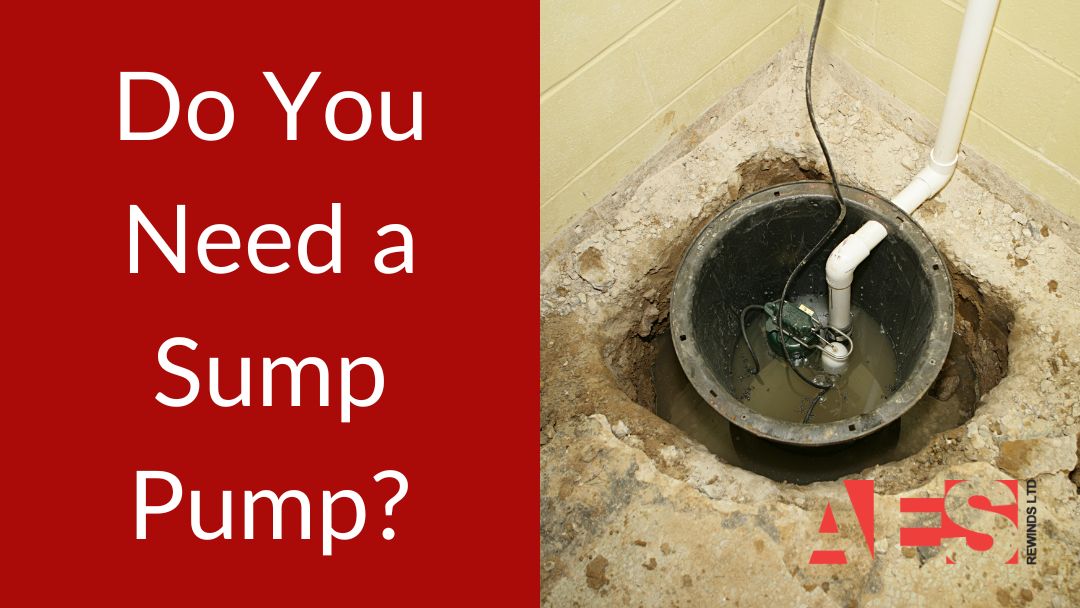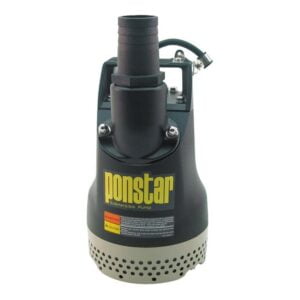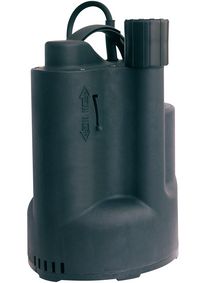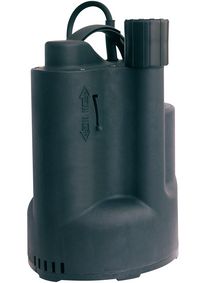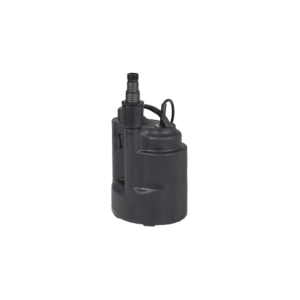You might need a sump pump if you’re dealing with water issues in your basement or live in an area prone to flooding. These devices are essential for preventing water damage by automatically pumping out excess water from your home’s lowest point. Signs that you need one include standing water, dampness after rain, or musty odours in your basement. A sump pump can be a lifesaver if you live in a region with heavy rainfall or snowmelt or have a high water table. It’s also a smart investment for new basements or homes in low-lying areas. Let’s explore the telltale signs and benefits of installing a sump pump in more detail.
Key Takeaways
- Assess your home’s location for high water tables, frequent rainfall, or low-lying areas prone to flooding.
- Check for signs of water intrusion like dampness, standing water, or musty odours in your basement.
- Consider the age and condition of your home’s foundation, looking for cracks or visible water seepage.
- Evaluate the drainage around your home, including soil type and grading of the surrounding landscape.
- Weigh the potential cost of water damage against the investment in a sump pump for long-term protection.
What Is a Sump Pump for?
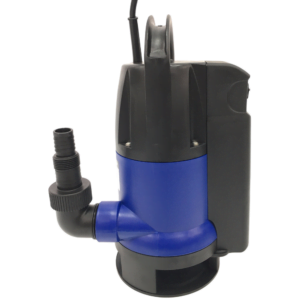
A sump pump’s primary purpose is to prevent water damage. This essential plumbing appliance is your basement’s best friend, working tirelessly to keep excess groundwater at bay.
You’ll find it nestled in a sump pit at the lowest point of your home, ready to spring into action when water levels rise. Sump pumps are particularly crucial for homes in areas with high water tables, as they help maintain a dry basement and protect your belongings from potential flooding.
Think of your sump pump as a silent guardian, constantly monitoring the situation underground. When heavy rains or melting snow threaten to flood your basement, it kicks into gear automatically.
It detects rising water levels using a float switch and starts pumping the excess away from your home’s foundation.
Signs Your Home Needs a Sump Pump
If you’re wondering whether your home needs a sump pump, there are a few key signs to look out for.
Water in your basement is a clear indicator, as is living in an area with heavy annual rainfall or snowfall.
Sump pumps are essential for basement waterproofing and prevent water damage and mould growth.
Regular pump and float switch checks are recommended to ensure optimal performance.
You should also consider installing a sump pump if your home is in a low-lying area or if you recently added a new basement to your property.
There is water in your basement
One of the most obvious signs that your home needs a sump pump is standing water in your basement. If you’ve noticed visible water pooling or dampness after heavy rainfall.
Basement flooding isn’t just an inconvenience; it can lead to serious structural damage and create the perfect environment for mould growth.
Don’t wait until you’re wading through ankle-deep water to realise you need a sump pump. Look for persistent musty odours or recurring wet spots, telltale signs of excess moisture.
If you’ve spotted cracks in your foundation or walls accompanied by water seepage, you’re likely dealing with hydrostatic pressure issues that a sump pump can help alleviate.
Even if you haven’t experienced flooding yet, monitoring groundwater levels around your home is wise. Installing a sump pump can be a smart preventive measure if it frequently rises near the foundation.
You live in an area with lots of water or snow annually
In regions with abundant annual rainfall or heavy snowfall, your home faces an increased risk of water-related issues. If you’re living in such an area, installing a sump pump might be wise to protect your property.
These handy devices are essential for managing excess water and preventing basement flooding, which can significantly damage your home’s structure and belongings.
Sump pumps work tirelessly to keep your basement dry by removing excess groundwater before it becomes a problem. They’re especially crucial in flood-prone areas where hydrostatic pressure can force water through foundation cracks.
Your home is in a low-lying area
While abundant rainfall and snowfall can pose risks, living in a low-lying area presents its own challenges regarding water management. As a homeowner in such a location, you’re more susceptible to flooding and groundwater intrusion.
The water table in these areas can rise significantly after storms, increasing the risk of water seeping into your basement or crawlspace.
If you’re wondering whether you need a sump pump installation, consider these telltale signs:
- Your basement or crawlspace often has moisture or standing water after rain
- The soil around your home drains poorly or slopes towards the foundation
- You’ve noticed a musty odour or mould growth in lower levels of your home
Regular evaluation of moisture levels in your low-lying property can help determine if a sump pump is necessary.
It’s a crucial protective measure against potential water damage and can maintain indoor air quality.
Don’t wait for a major flooding event to take action. By installing a sump pump now, you’ll be better prepared for future water-related challenges and can protect your home’s value and structural integrity.
You have a new basement
A new basement can be an exciting addition to your home, but it also comes with its own set of challenges. One of the most important considerations is protecting it from water damage. Even if you haven’t experienced any issues, it’s wise to think about installing a sump pump.
Your new basement is particularly vulnerable to water intrusion, especially if the surrounding ground isn’t properly graded. Keep an eye out for signs that you might need a sump pump. Notice any moisture on the walls or basement floor? That’s a red flag. Excessive humidity, condensation on windows, or a musty smell are also telltale signs that you should consider a new sump pump.
Don’t forget about hydrostatic pressure, which can force groundwater into your basement during heavy rain. A submersible sump pump can help manage this issue, keeping your new space dry and protecting your investment.
Benefits of Installation
Installing a sump pump offers numerous benefits that go beyond preventing water damage. By keeping your basement dry, you’re protecting your home’s structural integrity and improving your indoor air quality. By reducing the risk of mould and mildew growth, which can lead to respiratory issues and allergies, you’re also improving your indoor air quality.
Sump pumps are designed specifically for clear or grey water and are primarily used to prevent flooding in basements or crawl spaces. They’re suitable for DIY installation and require annual cleaning and maintenance.
A sump pump installation can transform your basement experience:
- Your basement becomes a usable, comfortable space for storage or living.
- You’ll notice a decrease in musty odours and dampness.
- Your belongings stay safe and dry, free from water damage.
Moreover, a sump pump can increase your property value. Potential buyers will appreciate the peace of mind of knowing the home is protected against water issues.
You’ll also save money in the long run by avoiding costly repairs associated with water damage. Plus, the reduced humidity levels can lower your energy bills by easing the workload on your air conditioning system.
It’s like having an extra layer of insurance against Mother Nature’s whims, especially if you live in a flood-prone area.
-
%27%20fill-opacity%3D%27.5%27%3E%3Cellipse%20fill%3D%22%23272725%22%20fill-opacity%3D%22.5%22%20rx%3D%221%22%20ry%3D%221%22%20transform%3D%22rotate(-5.6%201625.4%20-1372.3)%20scale(52.64483%20121.72137)%22%2F%3E%3Cellipse%20fill%3D%22%23fff%22%20fill-opacity%3D%22.5%22%20rx%3D%221%22%20ry%3D%221%22%20transform%3D%22matrix(-13.96388%20-298.50169%2052.69032%20-2.46485%20262%20127.9)%22%2F%3E%3Cellipse%20fill%3D%22%23fff%22%20fill-opacity%3D%22.5%22%20rx%3D%221%22%20ry%3D%221%22%20transform%3D%22matrix(-9.00505%20298.69241%20-42.15143%20-1.2708%2034.6%20121.9)%22%2F%3E%3Cellipse%20fill%3D%22%23454642%22%20fill-opacity%3D%22.5%22%20rx%3D%221%22%20ry%3D%221%22%20transform%3D%22matrix(28.07716%20-1.9693%206.02718%2085.93193%20141.5%20149)%22%2F%3E%3C%2Fg%3E%3C%2Fsvg%3E) Koshin Ponstar PX 55011 110v Automatic Submersible Pump£349.15 +VAT
Koshin Ponstar PX 55011 110v Automatic Submersible Pump£349.15 +VAT -
%27%20fill-opacity%3D%27.5%27%3E%3Cellipse%20fill%3D%22%23272725%22%20fill-opacity%3D%22.5%22%20rx%3D%221%22%20ry%3D%221%22%20transform%3D%22rotate(-5.6%201625.4%20-1372.3)%20scale(52.64483%20121.72137)%22%2F%3E%3Cellipse%20fill%3D%22%23fff%22%20fill-opacity%3D%22.5%22%20rx%3D%221%22%20ry%3D%221%22%20transform%3D%22matrix(-13.96388%20-298.50169%2052.69032%20-2.46485%20262%20127.9)%22%2F%3E%3Cellipse%20fill%3D%22%23fff%22%20fill-opacity%3D%22.5%22%20rx%3D%221%22%20ry%3D%221%22%20transform%3D%22matrix(-9.00505%20298.69241%20-42.15143%20-1.2708%2034.6%20121.9)%22%2F%3E%3Cellipse%20fill%3D%22%23454642%22%20fill-opacity%3D%22.5%22%20rx%3D%221%22%20ry%3D%221%22%20transform%3D%22matrix(28.07716%20-1.9693%206.02718%2085.93193%20141.5%20149)%22%2F%3E%3C%2Fg%3E%3C%2Fsvg%3E) Koshin Ponstar PX 55011 110v Manual Submersible Pump£321.55 +VAT
Koshin Ponstar PX 55011 110v Manual Submersible Pump£321.55 +VAT -
%27%20fill-opacity%3D%27.5%27%3E%3Cellipse%20fill%3D%22%23272725%22%20fill-opacity%3D%22.5%22%20rx%3D%221%22%20ry%3D%221%22%20transform%3D%22rotate(-5.6%201625.4%20-1372.3)%20scale(52.64483%20121.72137)%22%2F%3E%3Cellipse%20fill%3D%22%23fff%22%20fill-opacity%3D%22.5%22%20rx%3D%221%22%20ry%3D%221%22%20transform%3D%22matrix(-13.96388%20-298.50169%2052.69032%20-2.46485%20262%20127.9)%22%2F%3E%3Cellipse%20fill%3D%22%23fff%22%20fill-opacity%3D%22.5%22%20rx%3D%221%22%20ry%3D%221%22%20transform%3D%22matrix(-9.00505%20298.69241%20-42.15143%20-1.2708%2034.6%20121.9)%22%2F%3E%3Cellipse%20fill%3D%22%23454642%22%20fill-opacity%3D%22.5%22%20rx%3D%221%22%20ry%3D%221%22%20transform%3D%22matrix(28.07716%20-1.9693%206.02718%2085.93193%20141.5%20149)%22%2F%3E%3C%2Fg%3E%3C%2Fsvg%3E) Koshin Ponstar PX 55022 230v Automatic Submersible Pump£349.15 +VAT
Koshin Ponstar PX 55022 230v Automatic Submersible Pump£349.15 +VAT -
%27%20fill-opacity%3D%27.5%27%3E%3Cellipse%20fill%3D%22%23272725%22%20fill-opacity%3D%22.5%22%20rx%3D%221%22%20ry%3D%221%22%20transform%3D%22rotate(-5.6%201625.4%20-1372.3)%20scale(52.64483%20121.72137)%22%2F%3E%3Cellipse%20fill%3D%22%23fff%22%20fill-opacity%3D%22.5%22%20rx%3D%221%22%20ry%3D%221%22%20transform%3D%22matrix(-13.96388%20-298.50169%2052.69032%20-2.46485%20262%20127.9)%22%2F%3E%3Cellipse%20fill%3D%22%23fff%22%20fill-opacity%3D%22.5%22%20rx%3D%221%22%20ry%3D%221%22%20transform%3D%22matrix(-9.00505%20298.69241%20-42.15143%20-1.2708%2034.6%20121.9)%22%2F%3E%3Cellipse%20fill%3D%22%23454642%22%20fill-opacity%3D%22.5%22%20rx%3D%221%22%20ry%3D%221%22%20transform%3D%22matrix(28.07716%20-1.9693%206.02718%2085.93193%20141.5%20149)%22%2F%3E%3C%2Fg%3E%3C%2Fsvg%3E) Koshin Ponstar PX 55022 230v Manual Submersible Pump£321.55 +VAT
Koshin Ponstar PX 55022 230v Manual Submersible Pump£321.55 +VAT -
 Koshin Ponstar PX Submersible PumpsFrom £321.55
Koshin Ponstar PX Submersible PumpsFrom £321.55 -
 Pentair Flotec Compac 200 (DPC) 230v Submersible Pump£243.58 +VAT
Pentair Flotec Compac 200 (DPC) 230v Submersible Pump£243.58 +VAT -
 Pentair Flotec Compac 150 110v Submersible Pump£214.60 +VAT
Pentair Flotec Compac 150 110v Submersible Pump£214.60 +VAT -
 Pentair Flotec Compac 150 230v Submersible Pump£214.60 +VAT
Pentair Flotec Compac 150 230v Submersible Pump£214.60 +VAT -
%27%20fill-opacity%3D%27.5%27%3E%3Cellipse%20fill%3D%22%23575757%22%20fill-opacity%3D%22.5%22%20rx%3D%221%22%20ry%3D%221%22%20transform%3D%22matrix(-8.17173%20-72.82652%2054.25951%20-6.08836%20144.6%20160.6)%22%2F%3E%3Cellipse%20fill%3D%22%23585858%22%20fill-opacity%3D%22.5%22%20rx%3D%221%22%20ry%3D%221%22%20transform%3D%22matrix(-3.63357%20-42.38378%2030.71439%20-2.63315%20146%20162)%22%2F%3E%3Cellipse%20fill%3D%22%23fff%22%20fill-opacity%3D%22.5%22%20rx%3D%221%22%20ry%3D%221%22%20transform%3D%22rotate(80.1%2044.3%20233.8)%20scale(298.82813%2083.61165)%22%2F%3E%3Cellipse%20fill%3D%22%23fff%22%20fill-opacity%3D%22.5%22%20rx%3D%221%22%20ry%3D%221%22%20transform%3D%22matrix(8.617%20269.45255%20-56.88968%201.81931%2047.6%20156.6)%22%2F%3E%3C%2Fg%3E%3C%2Fsvg%3E) Pentair Flotec Compac 150 & 200 Submersible (Sump) PumpsFrom £214.60
Pentair Flotec Compac 150 & 200 Submersible (Sump) PumpsFrom £214.60
Frequently Asked Questions
Is It Okay to Not Have a Sump Pump?
Not having a sump pump can be acceptable in certain situations:
- There isn’t a risk of rainwater entering your property during heavy rainfall
- If your home is built on high ground or a slope that naturally directs water away
- If your area has well-draining soil
- If you live in an arid climate with minimal rainfall
- If your home has never experienced basement flooding or moisture issues
- If local building codes don’t require one
However, not having a sump pump can be risky if:
- Your home is in a flood-prone area
- You have a basement or crawl space below ground level
- Your area experiences heavy rainfall or snowmelt
- You have a high water table
- You’ve experienced previous water issues in your basement
- Your foundation shows signs of water damage
Consider installing a sump pump as preventive maintenance if any risk factors exist, as water damage repairs typically cost much more than pump installation.
How Do I Know if I Need a Sump Pump?
You’ll know you need a sump pump if you’ve experienced basement flooding, have high groundwater levels, or live in a flood-prone area. Check for moisture issues, poor drainage, or water pooling around your foundation after heavy rainfall.
Do I Need a Sump Pump if I Have a Drain?
Even if you have a drain, you might still need a sump pump. It provides extra protection against groundwater and flooding, especially in areas prone to heavy rainfall. Consider your home’s location and history of water issues when deciding.
How Important Is a Sump Pump?
A sump pump is crucial if you live in a flood-prone area or have a basement. It will protect your home from water damage, prevent mold growth, and preserve your property’s value. Don’t underestimate its importance in safeguarding your investment.
What are the alternatives to a sump pump?
Answer What are the alternatives to a sump pump? for an FAQ
Several alternatives to a sump pump exist:
- French Drain System
- Network of underground pipes redirecting water away from home
- Works with gravity flow
- Requires proper grading
- Foundation Waterproofing
- External waterproof coating on foundation walls
- Interior waterproof sealants
- Helps prevent water from entering basement
- Grading and Landscaping
- Sloping ground away from house
- Installing proper gutters and downspouts
- Creating swales or drainage paths
- Drain Tiles
- Perforated pipes around foundation
- Collects and redirects groundwater
- Can work without electricity
- Battery-Powered Backup Pump
- Alternative during power outages
- Works alongside existing systems
- Provides emergency protection
- Manual Bail-Out System
- Bucket and container method
- Labour-intensive
- Suitable for occasional flooding
Each alternative has specific advantages and limitations depending on your property’s conditions and water management needs.
Is there such a thing as an outdoor sump pump?
Yes, outdoor sump pumps exist and are commonly used to remove excess water from low-lying areas of yards, driveways, or other outdoor spaces. They are specifically designed to withstand outdoor conditions with weather-resistant materials and sealed components. Common applications include:
- Removing standing water from yards
- Draining flooded areas after heavy rain
- Managing water around pool decks
- Preventing flooding in basement window wells
- Draining water from landscaping features
Outdoor sump pumps typically include:
- Durable impeller design
- Weatherproof housing
- UV-resistant materials
- Corrosion-resistant components
- Freeze protection features
Conclusion
If you’ve noticed any of these signs, it’s time to consider a sump pump. Don’t wait for water damage to strike before taking action. Installing a sump pump can save you from costly repairs and provide peace of mind during heavy rains or snowmelt. Remember, it’s not just about protecting your property; it’s about safeguarding your home and your family’s well-being. So, take a closer look at your situation and make an informed decision. Your future self will thank you!

